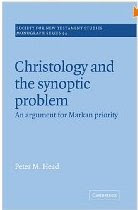This collects and analyses all the traditions in the rabbinic corpus which can arguably be dated with an origin before 70 CE. The exegetical interpretive techniques in these Palestinian rabbinic traditions are always based on the peshat meaning (ie the literal primary meaning), whereas after 70 CE many interpretations were based on the derash meaning (non-literal, allegorical, or secondary meanings where the text is read outside its context). In Alexandria and at Qumran these new non-literal interpretive techniques were already starting to be used before 70CE, but even they relied mainly on the literal meaning. It is therefore likely that the NT was influenced more by Palestinian Judaism, so we should not assume that NT exegesis uses these later techniques.
Techniques and Assumptions in Jewish Exegesis Before 70 CE
This collects and analyses all the traditions in the rabbinic corpus which can arguably be dated with an origin before 70 CE. The exegetical interpretive techniques in these Palestinian rabbinic traditions are always based on the peshat meaning (ie the literal primary meaning), whereas after 70 CE many interpretations were based on the derash meaning (non-literal, allegorical, or secondary meanings where the text is read outside its context). In Alexandria and at Qumran these new non-literal interpretive techniques were already starting to be used before 70CE, but even they relied mainly on the literal meaning. It is therefore likely that the NT was influenced more by Palestinian Judaism, so we should not assume that NT exegesis uses these later techniques.
Subscribe to:
Post Comments (Atom)













No comments:
Post a Comment